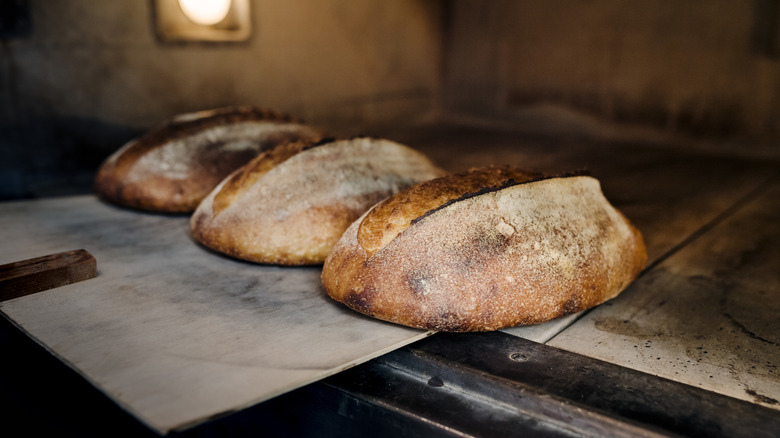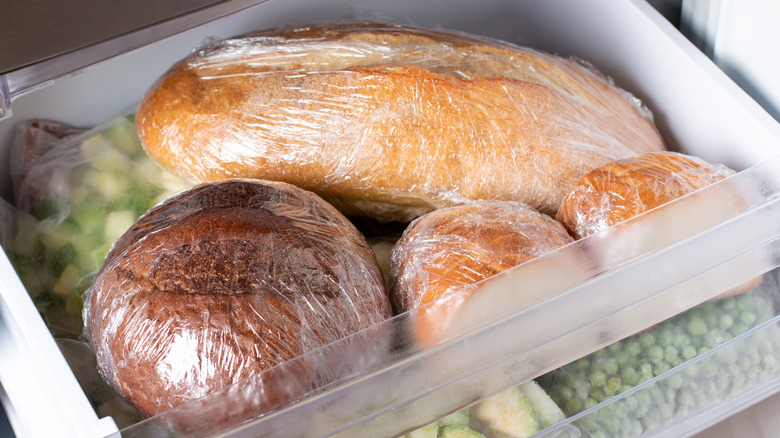How To Freeze Bread Without It Becoming Soggy
Bread lovers know the first bite of fresh, warm focaccia or loaf of bread straight from the oven is the best bite. The anticipation of sinking your teeth into a crunchy exterior and hitting a pillowy warm interior is indescribable. Yet, it can be difficult to preserve this food for future noshing. Freeze it too soon and your bread gets soggy; wait too long and your bread won't taste as delicious when you thaw it. If you plan on freezing a loaf of bread, albeit homemade or store-bought, you want to start with a loaf or a few leftover slices when they are at peak freshness. However, that doesn't mean taking it from oven to freezer either.
The best way to keep bread fresh starts with letting it cool. This goes for bakery bread or homemade. You should plan to let it sit for two hours before you cut into or prep it for freezing. This is because as bread cools, it releases moisture and if you were wrap it up and put that hot loaf into a freezer safe bag, the moisture will become trapped, making the bread soggy before it even hits the colder elements. But not allowing the bread to properly cool has another consequence; it is also going to give you a gummy texture that is not on par with your mouth's expectation.
Double wrap your bread first
When it comes to prepping your bread to store it in the freezer, you first want to bundle it in some plastic wrap; this is true for homemade or store-bought. One layer is good, two is better. Then break out your favorite brand of freezer-safe storage bags and place the double plastic-wrapped bread inside, push out any excess air, and seal. This should ensure your bread is free from the elements that can cause it to get soggy as it freezes. It will also protect it from stinky odors and the dreaded freezer burn. This storage technique works for both homemade bread as well as store-bought.
Some breads freeze better than others. Baguettes and crusty breads can be tricky. It's often recommended you slice them up into individual portions before you do so, and definitely be prepared to warm them up to help regain their texture. Additionally, traditional breads that are made with water, flour, and salt are easy to freeze. If it contains any dairy, you may want to forgo freezing because it just won't taste the same thawed.
When you thaw your bread, let it set on the counter until it is room temperature. Then to give it that fresh, just-baked taste, you can put it in the oven at 350 F and crisp it up, butter, and eat. Stored properly in the freezer, you can expect your bread to maintain its quality for about three months.

